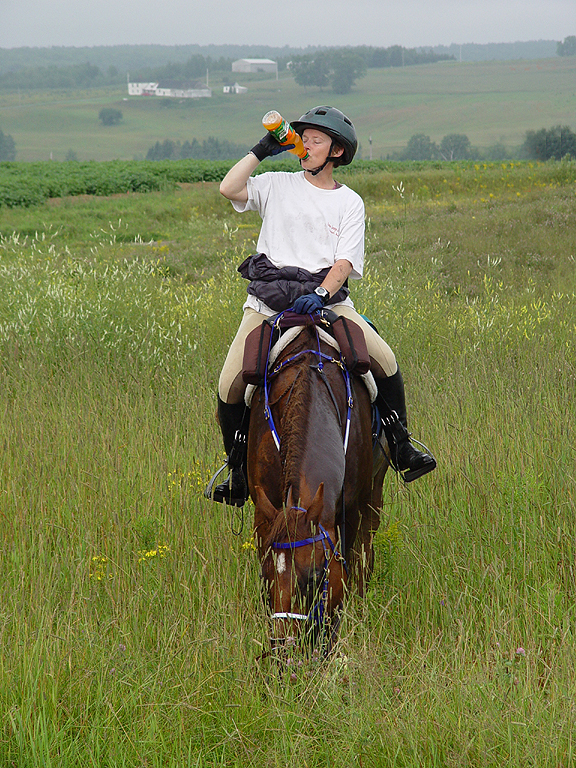Riding Blind
Riding Blind
You may be surprised to discover that there may be times when you have actually been riding blind. Dr. Alison Harman, a neuroscientist from Western Australia made this amazing discovery while investigating how horses see. She’s a rider and a neuroscientist and her research began after a seeing two horses collide in the ring, while being prepared for a dressage test. While the horses were being ridden in a high state of collection, they crashed headlong into one another at the canter. "At the time I thought, that’s very strange, why didn’t the horse stop or something." Said Dr. Harman.
"Well, I heard that the horse had a ramp retina and I always assumed that that was true and I didn’t think about it very much and then one day I started noticing that other animals didn’t have one and I wondered why a horse did." In Dukes Physiology, 1993 Edition, It says that, the horse has an eye unlike any other animal. It’s called a ramp retina and it works a bit like bifocals. The horse puts its head down to see long distances, and up to see short distances. And that’s what most of the textbooks have been saying for the last hundred years. Dr. Harman did some investigation and found that the ramp retina theory was just a load of rubbish.
The horse eye has something completely different to what our eyes do. It’s actually got something called a visual streak. The visual streak is a cluster of cells in a long strip. By contrast, the human eye has a cluster of cells in a tiny point. It means we see the world very differently.
Dr. Harman tested the limits of the horse’s vision. Just how far could the horse see forward, up, down and sideways? An ophthalmoscope was used to look at the shiny retina, and determine the horse’s field of view.
The horse’s field of view actually runs in the direction of the nose. Instead of it being in front of their head the way it is for us, it’s down their nose and sort of towards the ground.
Thus, the discovery as to why the two dressage horses collided. Because when the horse’s head is loose, it can put it’s nose up to look forward. But when a horse is ridden in the classical position, its nose points down. "It was a bit of a shock to discover that in fact they can’t see when their heads are pulled in like that. And it’s really rather a scary thought that; people are riding around so much these days with their horses like that." Observed Dr. Harman.
Information taken from an article by Jonica Newby.

- Log in to post comments
